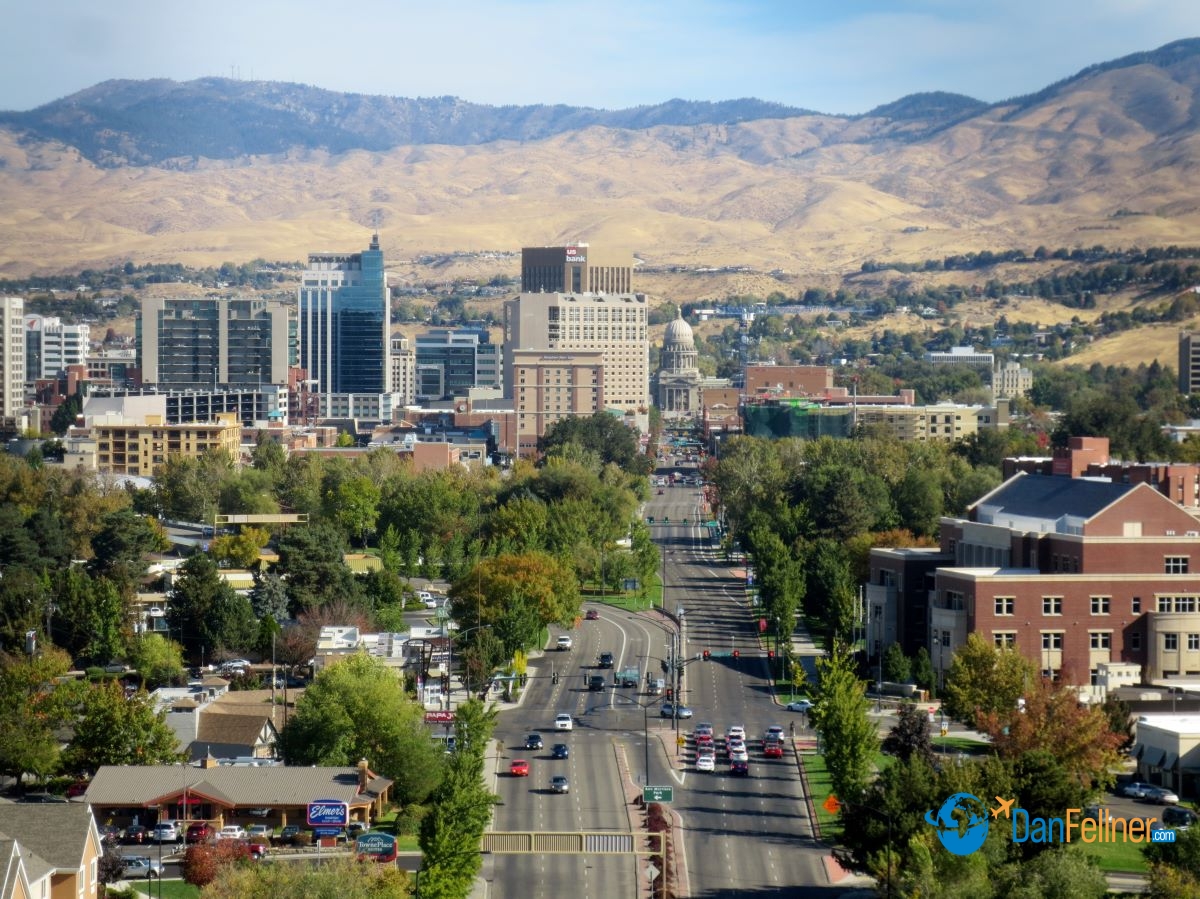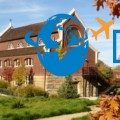Idaho’s capital city offers visitors much more than potatoes
The Arizona Republic — October 23, 2016
BOISE, Idaho – Idahoans take their spuds seriously.
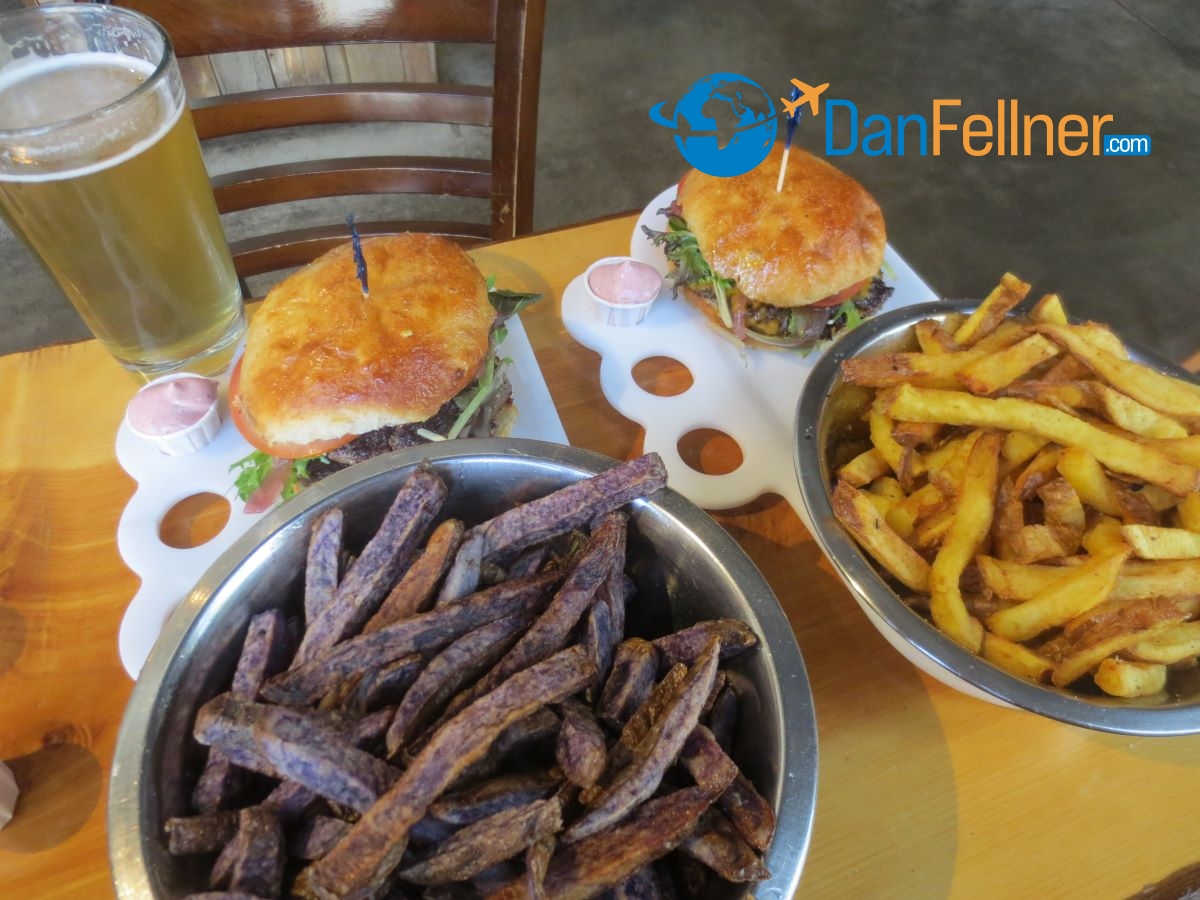
Lunch at the famous Boise Fry Company; Idahoans take their potatoes seriously.
It was our first meal in Boise and we walked two blocks from the Grove Hotel in the heart of downtown to the Boise Fry Company, perhaps the city’s most famous restaurant and a popular tourist attraction.
“Would you like burgers on the side?” our server Brad Walker jokingly asked as we browsed the menu board showing fries made from six different types of locally grown potatoes — russet, purple, gold, sweet, laura and yam. They come in five different cuts and are offered with a choice of nine types of house-made sauces and 10 varieties of salt.
We opted for heaping bowls of home-style purple and laura fries topped with garlic salt and accompanied with raspberry ketchup. And we got grass-fed bison burgers on the side, but more as an afterthought. We had come for the potatoes.
“Our fries are really the showcase main course,” said Walker, who doubles as the restaurant’s interim CEO. “That’s how we like to play it, since we’re in Idaho.”
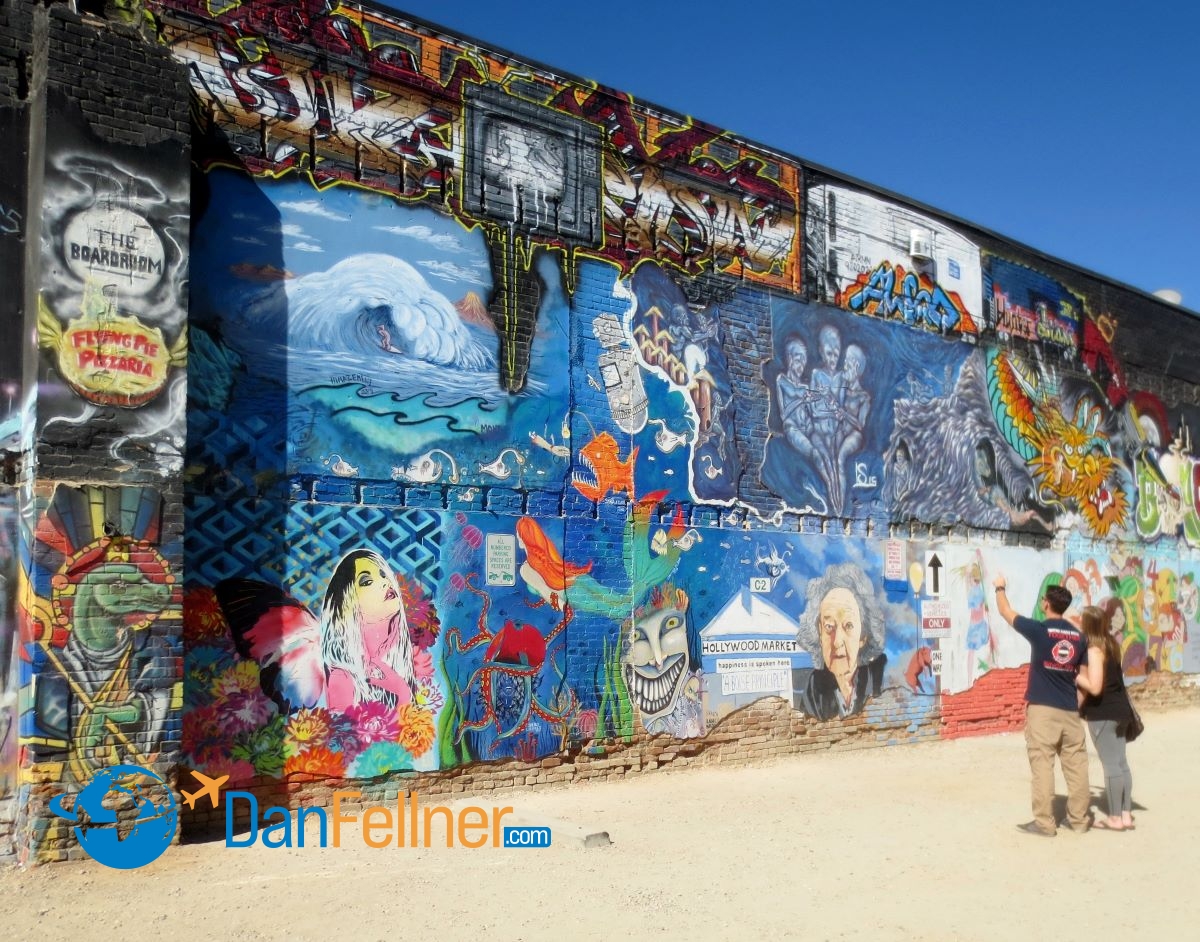
A street mural in downtown Boise, part of the city’s vibrant arts scene.
As we learned during a recent 72-hour visit to Boise, Idaho’s capital and largest city offers visitors a menu of activities, sightseeing and food much more diverse than its large variety of potatoes.
We found a city with a vibrant nightlife, arts community, plenty of trendy, farm-to-table restaurants serving locally made craft beers and wines, and enough outdoor venues to please any hiker, skier or biker.
It wasn’t the boring, northern plains dullsville I had been anticipating.
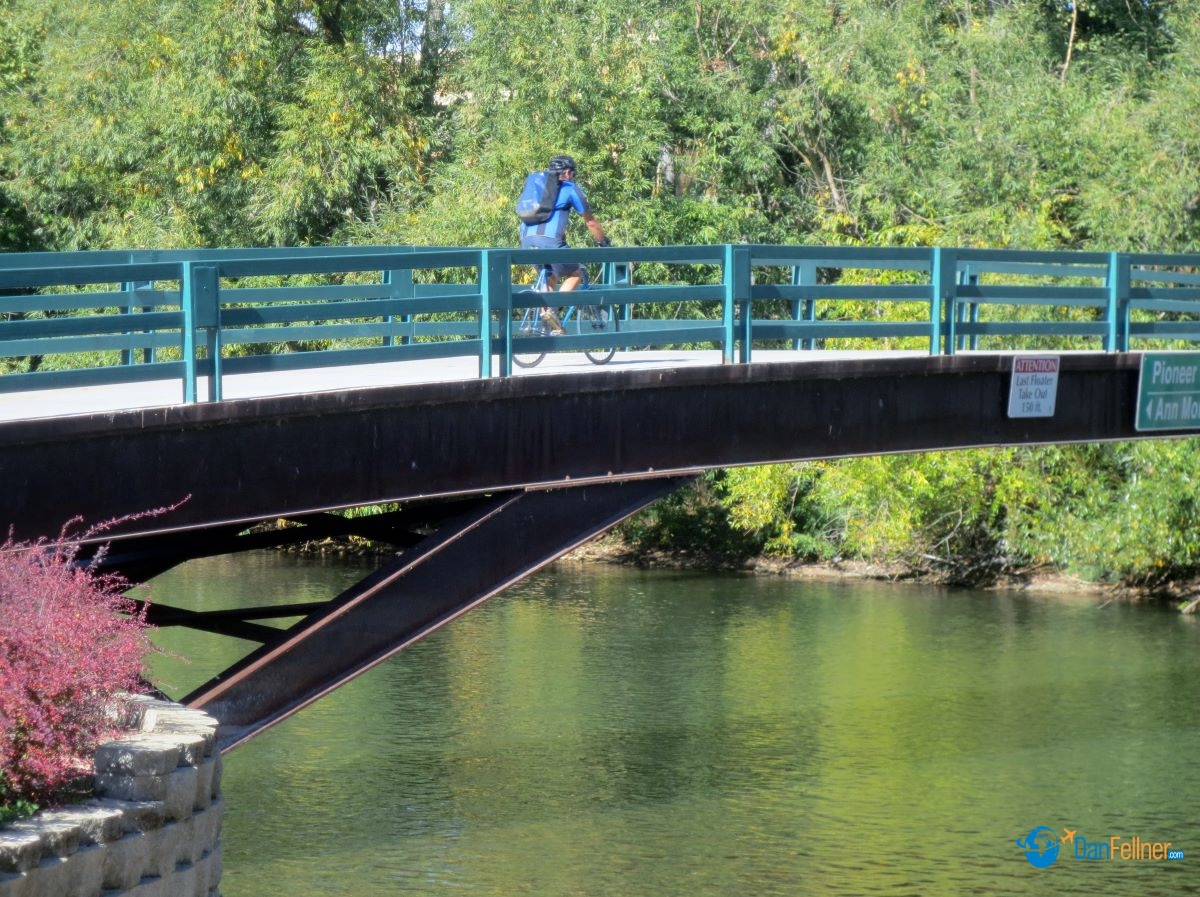
A cyclist crosses the Boise River.
“We hear that all the time — ‘I had no idea,’” said Carrie Westergard, executive director of the Boise Convention and Visitors Bureau. “People are surprised, and in a positive way.”
Westergard said tourism is growing in Boise: 400 more hotel rooms will open downtown by the end of 2017, a 35 percent jump from the current total of 1,100.
The city, nestled at the base of the Rocky Mountain foothills in southwestern Idaho, is home to about 200,000 people. If you want to sound like a local, pronounce the city Boy-see, not Boy-zee. In case you forget, shirts and hats are for sale in the souvenir shops to remind you.
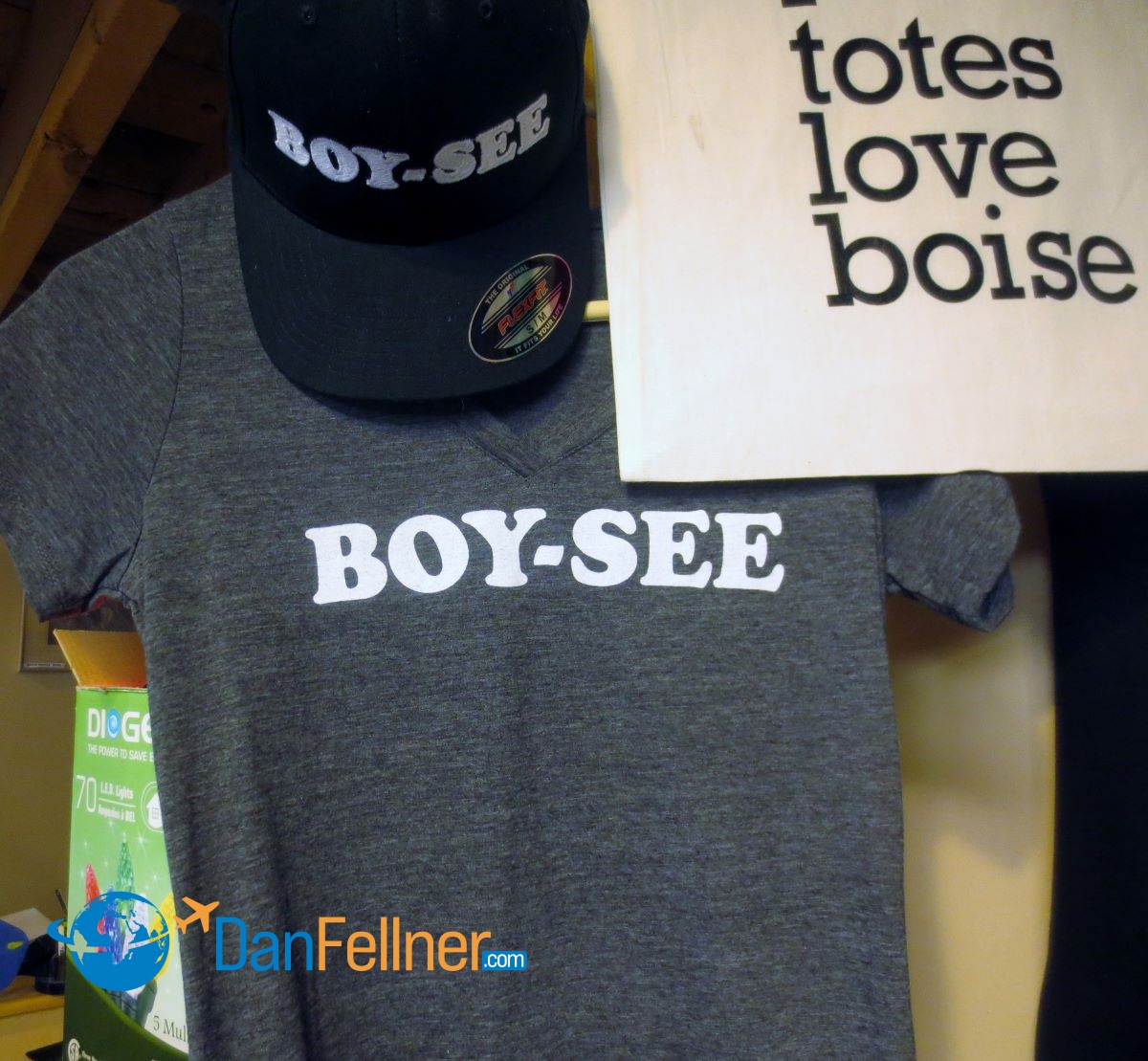
The locals pronounce their city Boy-see, not Boy-zee.
I decided to spend three days in Boise during Arizona State University’s fall break in early October. It was a wonderful time to visit as temperatures were still mild with highs in the upper 70s and the leaves were just starting to change.
Why Boise and not a more conventional fall-break choice like Rocky Point or San Diego? Like a lot of travel addicts, I’ve got an atlas-based bucket list, including visiting all 50 U.S. states. Idaho was the only state missing from my collection.
But a 72-hour trip to Boise turned out to be much more enriching than perfunctorily completing a checklist. Here are the top five highlights of my trip to a place that rightfully calls itself “the city of trees.”
Biking the Boise River Greenbelt
Boise’s name originates from the French word boisé, which means “wooded.” Take a bike ride along the 25-mile Boise River Greenbelt, and it’s easy to see why the French came up with that moniker.
The tree-lined paved pathway follows the Boise River through the heart of the city and provides scenic views and access to many of the area’s riverside parks. The Greenbelt also serves as an alternative transportation route for commuters. Bike kiosks offering rentals are located throughout downtown.
For those wanting more strenuous exercise, there are 130 miles of roads and trails in the foothills just northeast of the city.
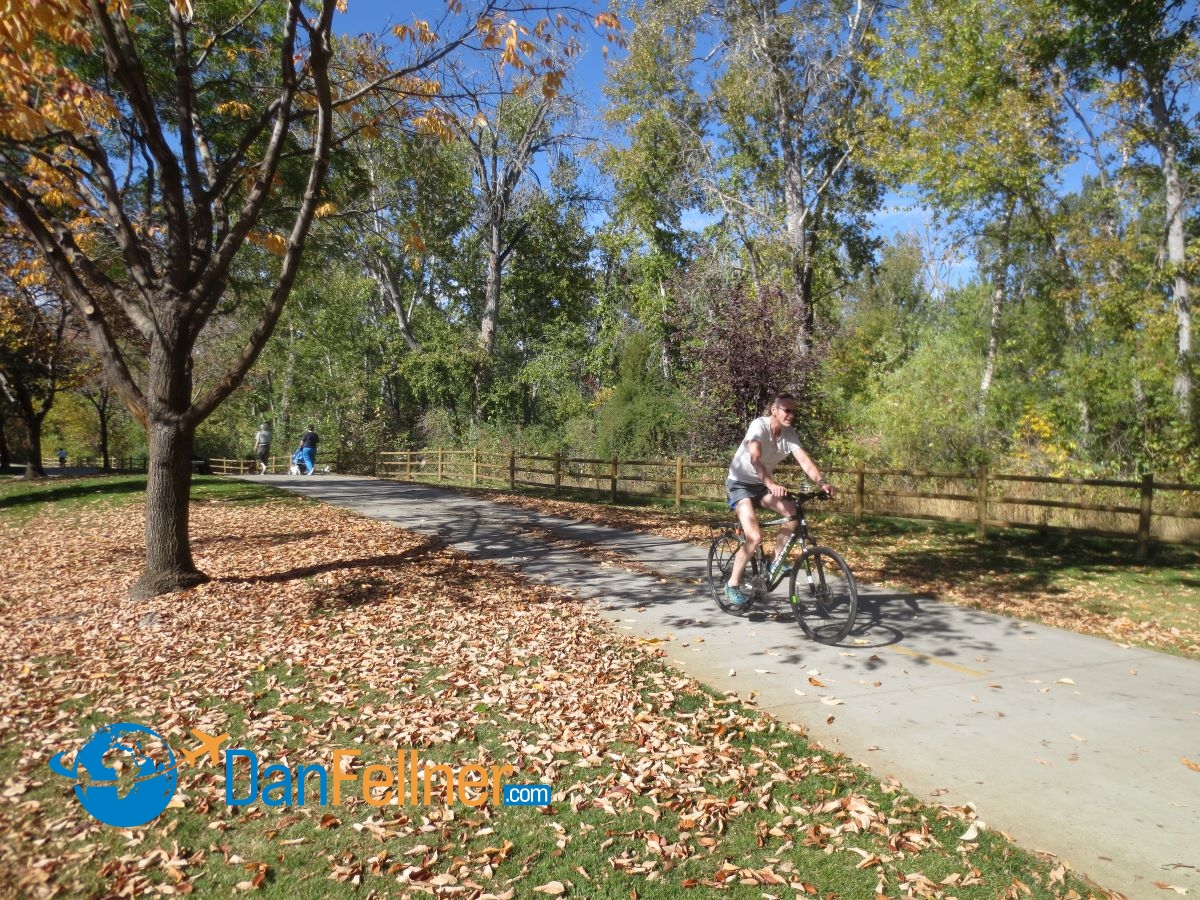
The Boise River Greenbelt is popular for bikers.
Basque culture
Idaho has long been a popular location for immigrants from the Basque region, which straddles northern Spain and southern France. In fact, Boise is home to the largest per-capita population in the world of Basque people (about 10,000) outside of the Basque region, including Boise’s current mayor. Basque people first began arriving in Idaho in the late 1800s; many worked as sheepherders.
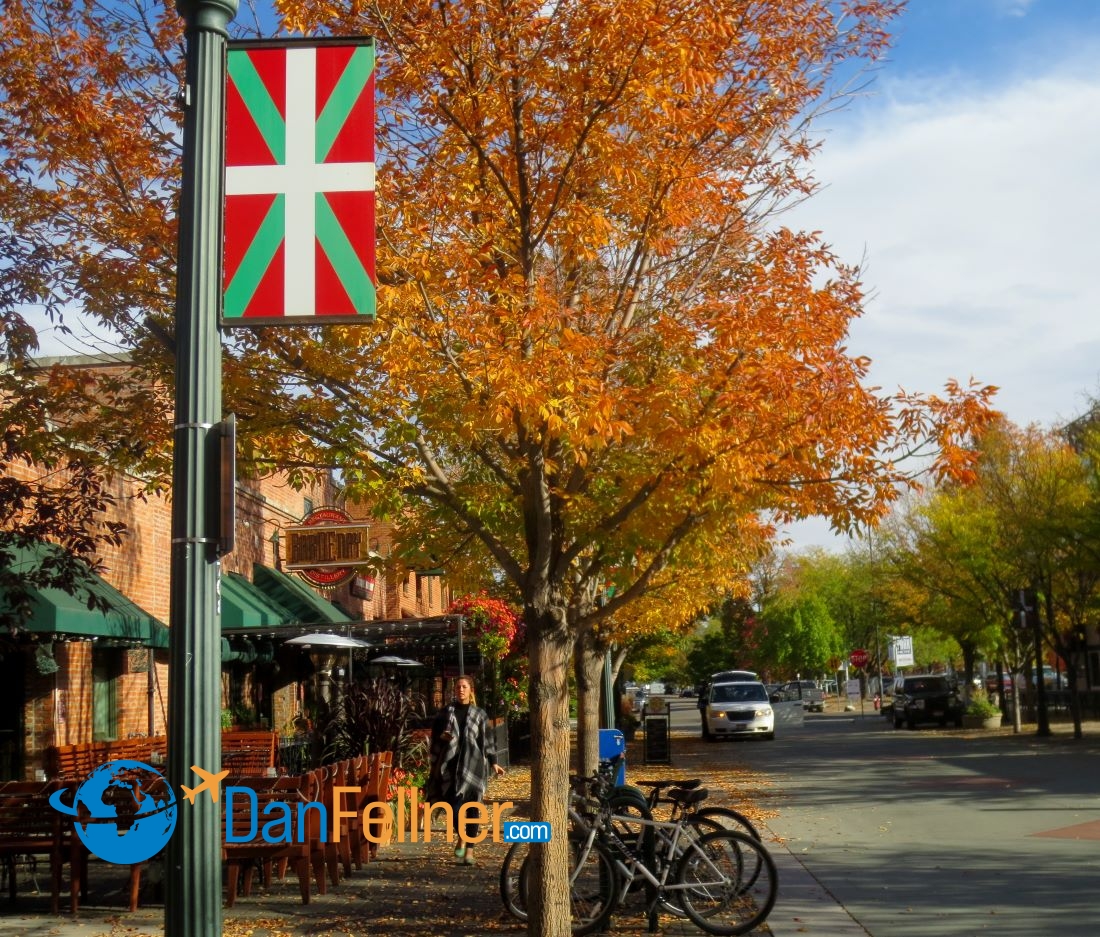
The Basque flag is displayed on Boise’s “Basque Block.”
A “Basque Block” in downtown Boise showcases the Basque culture. There is a museum, including a historic Basque boarding house, several Basque restaurants, a Basque market that hosts cooking classes and wine tastings, and a Basque community center.
I tried my hand at a Basque sport called pala, played with a wooden racket and hard rubber ball on an indoor court known as a fronton. I found it to be somewhat similar – but much more difficult – than American racquetball.
Idaho State Capitol
While it’s not the most breathtaking capitol you’ll see, Idaho’s center of government offers an interesting glimpse into the state’s history.
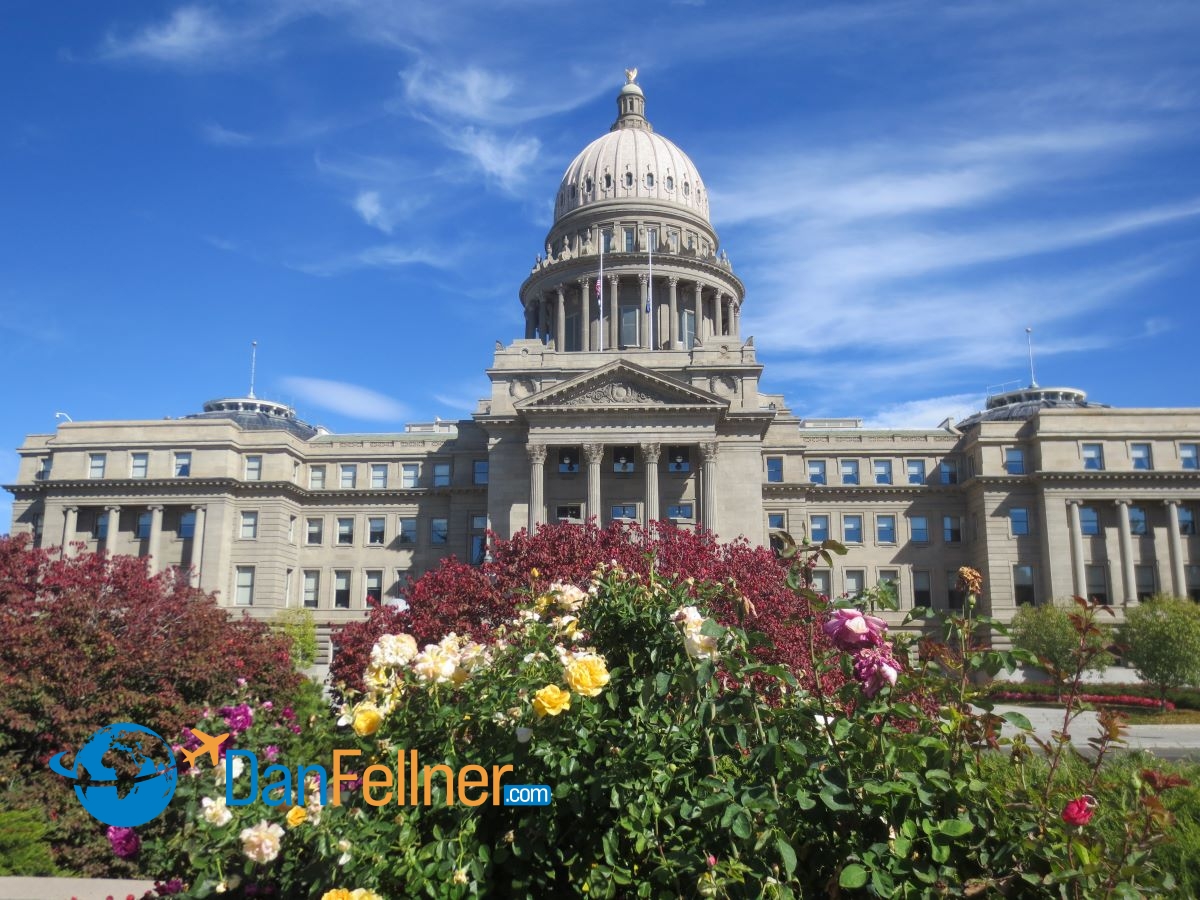
The Idaho State Capitol in downtown Boise.
Built from 1905-1912, the architect designed the capitol with skylights and reflective marble surfaces to capture natural sunlight. The intent was to create a building that was a metaphor for an enlightened and moral state government.
Entrance to the building is free; there are self-guided tours and a museum chronicling Idaho’s history on the bottom floor.
Outside, at the base of the stairs, there’s a replica of the Liberty Bell. Visitors are welcome to ring it, although the bell is so heavy, it took two of us – using all of our strength – to push it hard enough to earn a couple of chimes.
Dining and arts
This was perhaps Boise’s biggest surprise. There is a dynamic and bustling downtown full of chic and diverse restaurants. A chef at the popular Wild Root Café on 8th Street – otherwise known as Boise’s “restaurant row” – aptly described her cuisine as “craft, comfort food.” We never had a meal we didn’t enjoy.

Lamb stew for lunch at a Basque restaurant in Boise.
Before or after dinner, there are plenty of places to gaze at art without ever setting foot in a museum. Freak Alley, in the heart of downtown adjacent to a service alley, is the largest mural gallery in the Northwest. Each year, murals are painted over and replaced by new ones. The city also has commissioned local artists to paint street art on electrical boxes, transforming eyesores into eye-catching metal canvasses.
Boise State’s blue turf
The locals simply call it “The Blue.” It’s the famous turf at Albertsons Stadium, home to Boise State University’s football team, and the first non-green artificial football field in the country. Originally considered a gimmick when it was installed in 1986, the turf has come to symbolize the football program’s blue-collar work ethic.
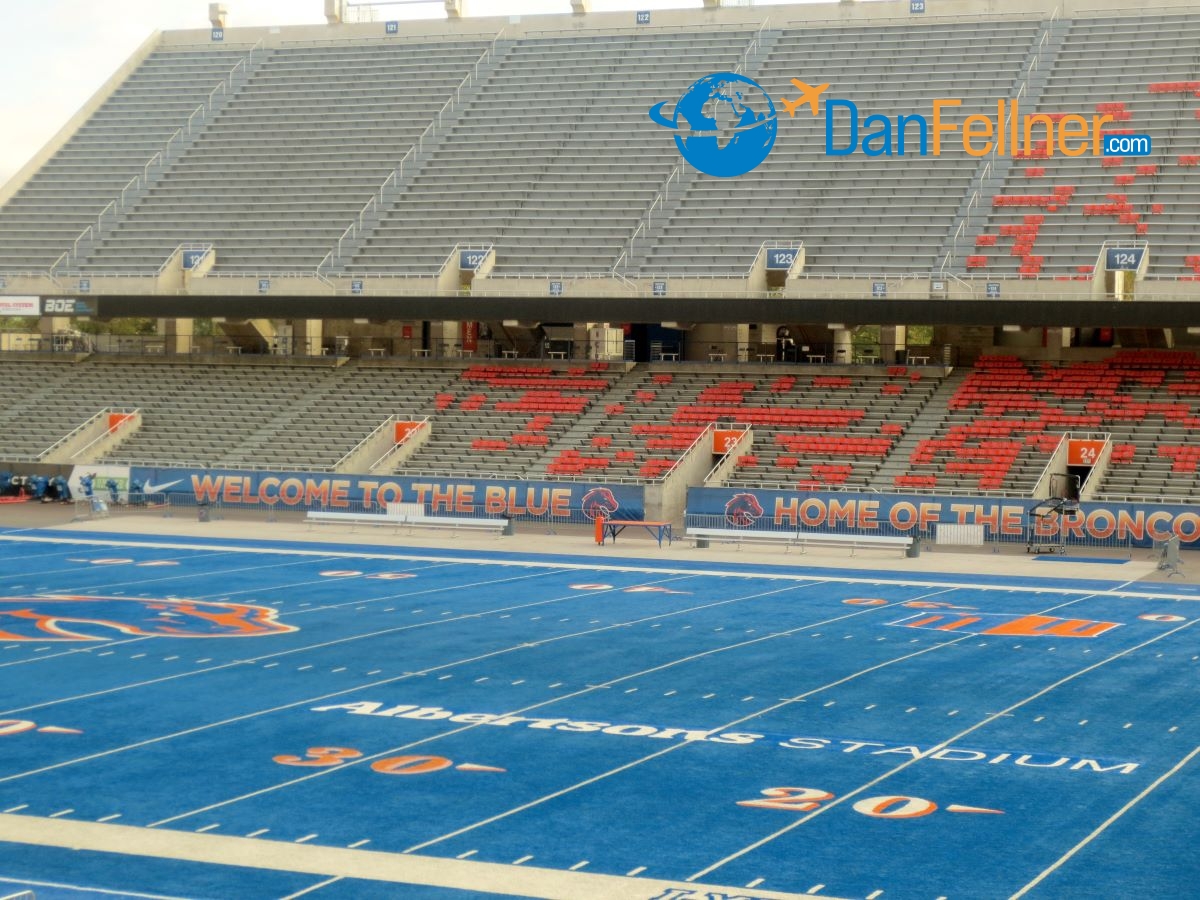
Visitors can see the blue field by entering the Allen Noble Hall of Fame, at the southwest corner of the stadium. One of the museum’s displays features the football used in perhaps the most famous play in Fiesta Bowl history – the 2007 game in which Boise State’s Ian Johnson scored a two-point conversion on a statue-of-liberty play to beat Oklahoma in overtime, 43-42.
_______________________
Boise is a safe and affordable city for visitors. Restaurant prices are about half of what you’ll typically pay in Scottsdale. There are non-stop flights every day from Phoenix to Boise on American and Southwest. Roundtrip fares are about $250.
While many tourists fly into Boise as a gateway to Idaho ski resorts, hiking trails or national parks in neighboring states, it’s well worth spending a few days in the city before heading to points beyond.
Boise offers more than enough options to keep you active, engaged and sated — even if you opt to skip the fries.
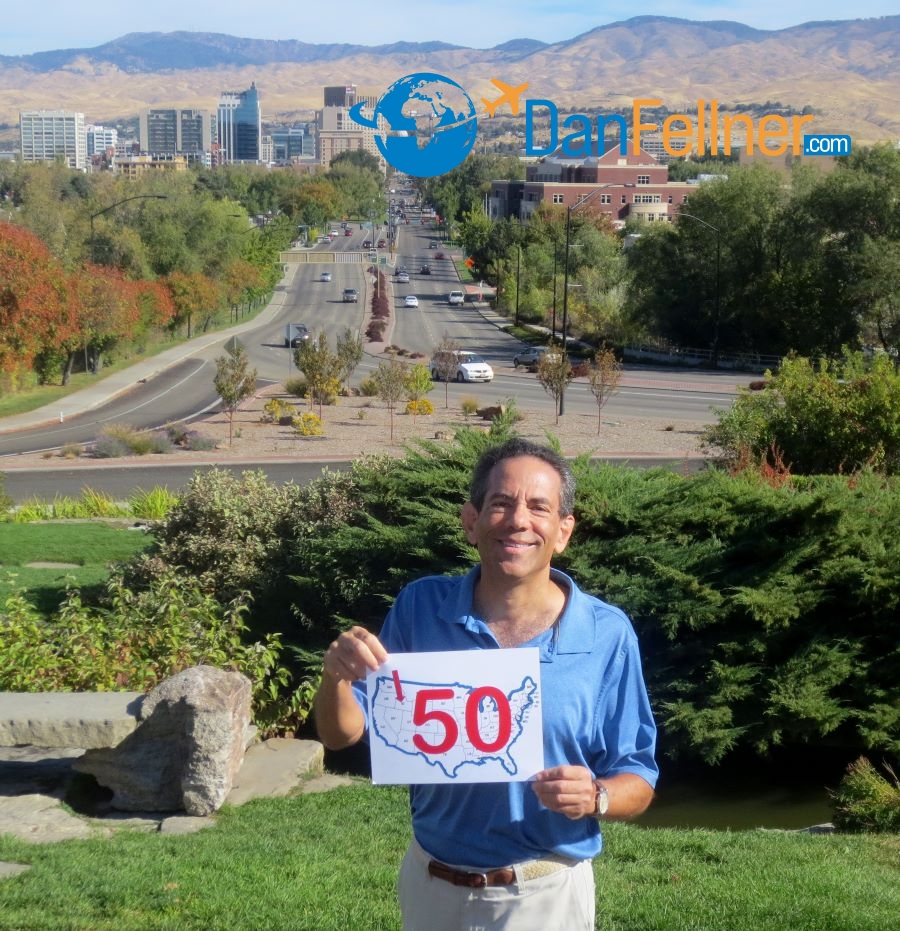
The author marks the milestone of visiting all 50 U.S. states during a 2016 trip to Idaho.
© 2016 Dan Fellner

